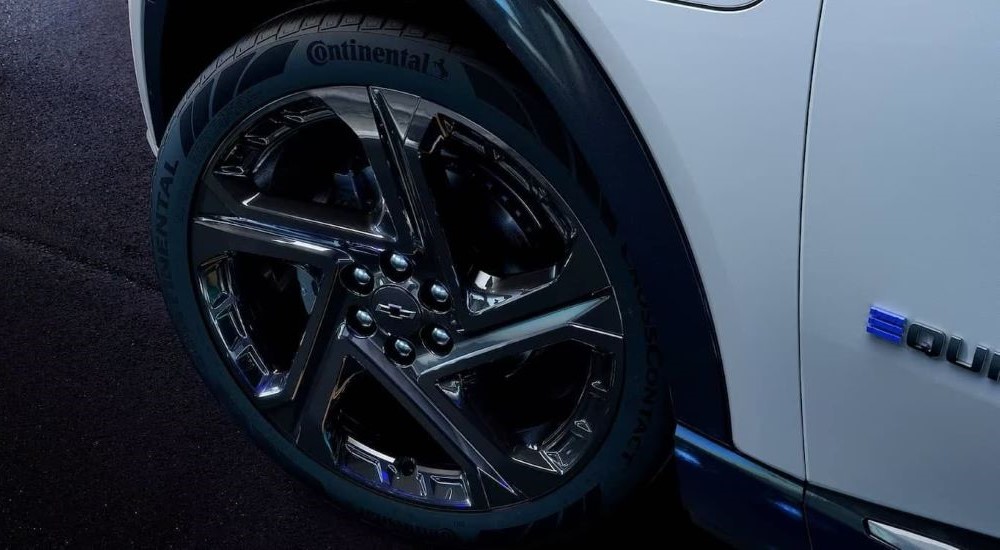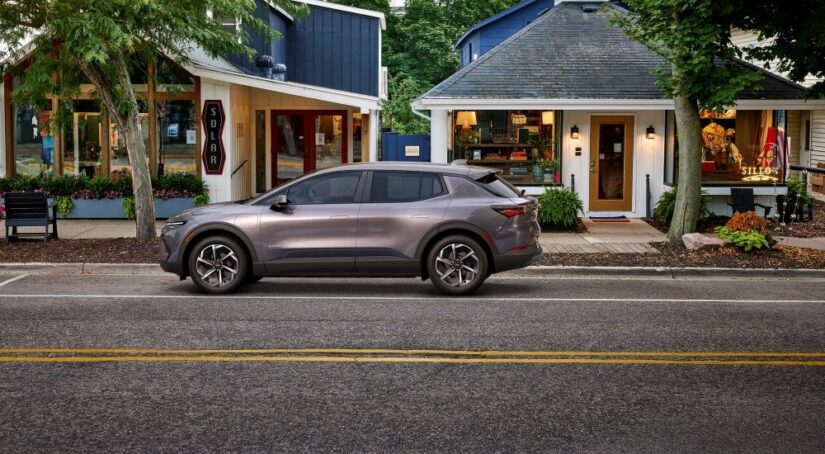As electric vehicles (EVs) become more popular, many buyers considering one are beginning to ask practical questions. Range, charging speed, and day-to-day convenience are top concerns, especially for those transitioning from traditional gas-powered vehicles. The 2025 Chevy Equinox EV delivers on all three fronts, offering critical SUV utility and all-electric capability. For anyone searching for a Chevy Equinox EV for sale, the first questions are often how far it can travel on a single charge and how long it takes to recharge.
Range and charging time considerations are essential when deciding whether an EV can handle real-world routines like commuting, errands, and weekend travel. From battery size to charging port options and DC fast-charging times, every detail matters when building confidence in an EV lifestyle. As EV technology evolves, vehicles like the Equinox EV deliver improved range and more consistent performance, even in less-than-ideal conditions such as cold weather, where battery drain was once a primary concern.
The Equinox EV combines everyday drivability with long-range capability, offering a realistic path forward for anyone ready to transition from gas-powered vehicles. This guide breaks down the 2025 Equinox EV’s estimated range, how it varies by trim, and what buyers can expect when charging at home or on the road. Buying an EV doesn’t mean dealing with the dreaded “range anxiety.” It becomes much easier to move forward confidently with a clear understanding of how vehicles like the Equinox EV perform.

Battery Architecture and Charging Capabilities
The 2025 Chevy Equinox EV is powered by General Motors’ innovative modular battery platform, a next-generation architecture designed to be both scalable and efficient. At its core is an 85-kWh lithium-ion battery pack composed of modular pouch-style cells arranged to maximize energy density while keeping weight and cost in check. This advanced setup enables the Equinox EV to strike a balance between performance, affordability, and everyday usability.
Unlike earlier EV platforms, the latest battery architecture allows for flexible battery placement and configurations across GM’s growing lineup of electric vehicles. In the 2025 Equinox EV, this translates to a low center of gravity, which improves handling, optimizes interior space, and provides sufficient capacity to deliver an estimated range of up to 319 miles on a full charge, depending on the trim level and drivetrain. Charging is just as important as range, and the Equinox EV offers three main options:
- Level 1 Charging (120V): Although slow, this method utilizes a standard household outlet and can deliver approximately 3 to 4 miles of range per hour. If daily driving distances are short, it’s best suited for occasional top-offs or overnight charging.
- Level 2 Charging (240V): With the standard 11.5-kW onboard charger, drivers can expect to regain up to 36 miles of range per hour when connected to a home charging station or public Level 2 unit. Higher trims may offer an available 19.2-kW upgrade, potentially cutting charging time further, but it’s important to note that energy consumption may increase slightly with this setup.
- DC Fast Charging: This is where the Equinox EV shines. Thanks to 150-kW DC fast charging support, the vehicle can add approximately 77 miles of range in 10 minutes, making longer trips much more convenient and allowing quick stops to refuel and return on the road.
Chevy has integrated a Battery Management System (BMS) into the Equinox EV’s battery platform. The system operates in the background to help preserve long-term performance, monitoring the battery’s condition and adjusting the distribution of energy across the cells, which can support a longer lifespan and more consistent day-to-day reliability.
Different Trims, Same Range: LT vs RS
The 2025 Chevy Equinox EV is available in three trims: LT1, LT2, and RS. All are offered with front-wheel or all-wheel drive options. Regardless of trim, every model is powered by the same 85-kWh battery. Where things differ slightly is in overall efficiency. The EPA estimates that front-wheel drive versions can deliver up to 319 miles of range on a full charge, making them a strong match for drivers who want to maximize the range of each charge. Switching to all-wheel drive adds a second electric motor for enhanced traction and acceleration, but slightly reduces the total range. The EPA estimates approximately 307 miles per charge in this configuration, which remains a reasonable distance for most lifestyles.
Buyers comparing the two LT trims and the RS trim will notice more than surface-level upgrades. The LT1 keeps things straightforward, offering a practical, well-equipped setup that makes sense for everyday use. The LT2 adds more comfort and active safety features, though all models include Chevy Safety Assist as standard equipment. The RS brings a bit more flair, with bolder design choices and a few extra touches aimed at drivers who want their SUV to reflect a little more personality with a sporty flair. Regardless of trim, buyers will benefit from the same battery technology and the option to choose a drivetrain that matches their lifestyle, whether that means maximizing range or opting for confident year-round traction.

Factors Impacting Real-World Driving Range
While the EPA-estimated range offers a reliable baseline, real-world conditions often tell a more nuanced story. The 2025 Chevy Equinox EV may be rated for up to 319 miles with front-wheel drive, but the actual range will likely vary based on several factors, including driving style, terrain, weather, and vehicle load. For example, highway driving at steady speeds tends to be more energy-intensive for electric vehicles (EVs) than city driving, due to the constant demand on the battery. In independent real-world testing, MotorTrend got 262 miles out of a FWD version, over 50 miles more than the nearest competitor.
Climate also plays a significant role. Cold weather can reduce battery efficiency and increase energy consumption due to the need for cabin heating, while extreme heat may reduce range due to the cooling system drawing additional power. Tools like preconditioning (warming or cooling the cabin while the vehicle is plugged in) can help mitigate these effects, and the Equinox EV includes this as a standard feature. Weight is another factor. Carrying passengers, cargo, or towing can lead to modest range reductions.
Understanding how these variables interact helps set realistic expectations. The Equinox EV is designed to handle everyday driving as competently as a gas-powered SUV. Still, knowing how different conditions affect range can help buyers plan smarter routes, schedule charging stops more effectively, and feel more confident on the road.
Is the 2025 Equinox EV Right for Your Lifestyle?
The 2025 Chevy Equinox EV offers an innovative and approachable entry point into EV ownership for drivers considering the switch to electric. With a maximum range of up to 319 miles, flexible charging options including DC fast charging of up to 150 kW, and the proven reliability of GM’s battery platform, the Equinox EV is designed to alleviate range anxiety and deliver practical performance for everyday life.
From quick daily errands to weekend drives, the Equinox EV is built to handle a wide range of everyday scenarios. The Equinox EV hits a sweet spot for drivers who want to go electric without overcomplicating things. For those considering the switch, the 2025 Equinox EV offers something rare in the EV space: the familiarity of Chevy’s signature practicality, wrapped in next-generation engineering. With trim options like the value-focused LT1, the upscale LT2, or the sporty RS, buyers can choose the style and features that best fit their routine without sacrificing efficiency.
As EV technology continues to evolve, vehicles like the Equinox EV are proving that you don’t have to compromise to go electric. By understanding how range works in real conditions and what to expect when charging, buyers can feel confident stepping into an EV that’s as practical as it is forward-thinking.



